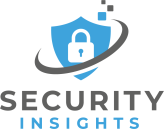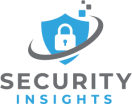
Many organizations face the challenge of providing the right level of resource access to their employees at the right time. Workforces have progressed to a mobile-first strategy and allowed user access from remote locations and numerous devices. It has introduced a set of potential risks if not managed properly.
Organizations need to follow governance practices and identity management solutions to manage the risks associated with remote access and address operational inefficiencies. It can be achieved by implementing a robust identity and access management program. It supports business compliance and security by allowing explicitly authorized users to access sensitive information.
In this article, we will dive deep into identity management and figure out the best and most useful identity management software to control user rights programmatically. Let’s get started.
What is Identity Management?
Identity management, also referred to as identity and access management (IAM), helps to ensure that only authorized users have access to the technical resources they require to perform a particular operation. It’s about defining and managing the access privilege and roles of users. Having an IAM framework in place, organizations can control user access to sensitive or critical information using single sign-on systems, privileged access management, and multi-factor authentication.
These technologies provide the ability to store identity and profile data securely to ensure that only required and relevant data is shared. Moreover, leveraging identity management solutions prevents unauthorized access to resources and systems, sends notifications and alerts when access attempts are made by the suspicious user, and prevents exfiltration of protected data.
On a fundamental level, Identity management encompasses these components.
- How users are identified in a system
- How roles are identified in a systems
- Adding, removing, and modifying users and their roles in a systems
- Assigning levels of access to users or group or users
- Protecting critical data within a system and protecting the system
Why is Identity Management important?
IT departments and business leaders are under increased pressure of regulatory and security compliance to protect access to organizational resources. As a result, they can no longer depend on error-prone and manual processes to assign and track user privileges. Identity management automates these tasks and enables access control and auditing of all organizational assets.
Identity and access management (IAM), with an ever-increasing list of features, such as biometrics, behavioral analytics, and artificial intelligence, is well suited for the diligence of the new security landscape. IAM solutions help organizations meet the security compliance requirements and help them save costs by reducing the time required to deal with user account privilege-related issues. Identity management helps to standardize critical aspects of managing identities, authorization, authentication, saving money and time while reducing the risks to organizations.
Why is there a need for identity management?
A recent study by (ISC)2 found that 80 percent of data breaches were due to identity access problems, namely mismanaged or weak credentials. Passwords could become more compromised, ransomware or breaches become a reality, and phishing attacks enabled if there are no proper controls, and procedures for IAM are not followed.
Identity management plays an important role in helping organizations comply with the endless regulatory and governance commands in effect, ensuring that only authorized users can access data. Organizations need identity management to provide online security and increase employee productivity.
- Securit_ Traditional security has one point of failure, that is password. If an individual’s password gets breached, the entire organization can become vulnerable to attacks. However, identity management narrows the points of failure and prevents data breaches and security attacks.
- Productivity_ With efficient identity management software, employees no longer need to worry about having the right access level or passwords to execute their duties. It helps reduce manual processes and thus increases productivity.
Risk of old/orphaned accounts
Remove your orphaned accounts if you want better identity management. These can represent damaging attack vectors into your organization’s IT environment. An old account can allow insider threats or hackers to conceal their malicious activities for months or years. User accounts form the core of all of your individual identities. These accounts contain all the necessary information your network requires to authenticate users in day-to-day capacities.
The organization’s IT teams create new accounts every time an employee joins. Logically, these accounts should get removed once the employee leaves the organization. But sometimes, the size of the organization’s network conceals old accounts from discovery.
These orphaned accounts have no valid users, but still, they exist in the network and have valid credentials. If criminals find the accounts lingering on the network, they can use these old accounts to infiltrate into the enterprise network, posing potential risks.
With an old account, a threat actor can
- Send a legitimate-looking email for a phishing attack, bypassing general email security.
- Access valuable assets or databases without raising security alerts, enabling easy transcription, theft, or illicit interference.
- Use necessary information to intercept two-factor authentication protocols via text messages.
- Disrupt business processes or change digital policies without raising prompt suspicion.
To overcome these potential risks, and prevent hackers or insider threats from infiltrating into your IT system, there is a need to have the best identity management software to automate these tasks for you.
5 Best Identity Management Solutions
Here is a list of some best identity access management software. Let’s discuss them in detail.
Microsoft Azure Active Directory
The Azure Active Directory enterprise identity service offers single sign-on, conditional access to guard against security attacks, and multi-factor authentication. Azure AD is a cloud-based comprehensive IAM solution that can manage the access rights of thousands of login accounts. Moreover, it can integrate smoothly with existing, on-premises AD domains and applications running in the cloud.
Features of Azure AD include
- Single sign-on simplifies access to your application
- Conditional access and multi-factor authentication helps secure enterprise data
- A single identity control plan provides complete visibility and control of your environment
- Governance ensures that the right people have the right access to the right resources and only when they require it.
Oracle Identity Cloud Service
Oracle Identity Cloud Service (IDCS) is a cloud-based identity-as-a-service (IDaaS) solution that is accessible in the Oracle Public Cloud (OPC). It is intended to supplement enterprise controls by automating the provisioning and deprovisioning of PaaS and SaaS accounts, simplifying the user experience for accessing cloud applications through seamless integration with enterprise identity stores and authentication services, and facilitating compliance activities through clear reporting on cloud application usage.
Features of IDCS are as follows:
- Apart from providing notifications and password policy warnings, administrators can personalize the sign-in pages’ and even the IDCS console’s interfaces.
- Administrators can configure IDCS to establish distinct self-registration profiles, approval policies, and apps.
- Human-readable role, access, and rights assignments simplify account and asset management.
IBM Security Identity and Access Solutions
IAM is critical for securing the hybrid multi-cloud enterprise. Intelligent, modern identity systems enable frictionless and secure interactions between users, assets, and data, laying the groundwork for a zero-trust strategy. Grant access rights, enable single sign-on from any device, bolster security with multi-factor authentication, manage user lifecycles, and safeguard privileged accounts, among other capabilities.
Features of IBM Identity and Access solution include
- Managing user accounts and groups’ access rights.
- Multi-factor authentication and single sign-on (SSO) from any device for better security
- Users can then access cloud, legacy, and on-premises apps — including VPNs, mainframes, Linux systems, and older PCs.
- Managing user accounts throughout their lives from creation to deletion.
- User access and activity are supervised, audited, and reported.
- Threat information, as well as whitelisting, greylisting, and blacklisting of applications based on their threat level.
SolarWinds Access Rights Manager (ARM)
SolarWinds Access Rights Manager (ARM) is one of the best top-drawer identity management tools. It does not only manage access rights but also categorizes resource sensitivity, identifies vulnerable accounts, and audits resource access. The primary function of Access Rights Manager is to provide greater control over user credentials. SolarWinds ARM is designed to deliver customized Active Directory reports, showing who has access to what and when they can access data.
SolarWinds Access Rights Manager features include
- Simplified Active Directory Provisioning
- Automated Sharepoint Provisioning
- Active Directory Reporting Tools
- Quickly generate audit read reports
- Minimize the impact of insider threats
SailPoint’s IdentityIQ
It’s a flagship identity management solution. IdentityIQ is well-regarded for its identity governance and provisioning abilities.
This tool can be used as a stand-alone, on-premise solution as well as an Identity-as-a-Service (IDaaS) solution. The IDaaS solution is a better option for organizations preferring their identity management handled by professionals.
Features of IdentityIQ include
- It can immediately connect a wide array of data and applications.
- IdentityIQ helps comply with various regulations, such as FISMA, HIPAA, SOX, CCPA, and GDPR.
- Quickly build access models and keep them updated.
- Build peer groups based on access patterns and attributes
- Identify individuals with risky access and track historical user access patterns

